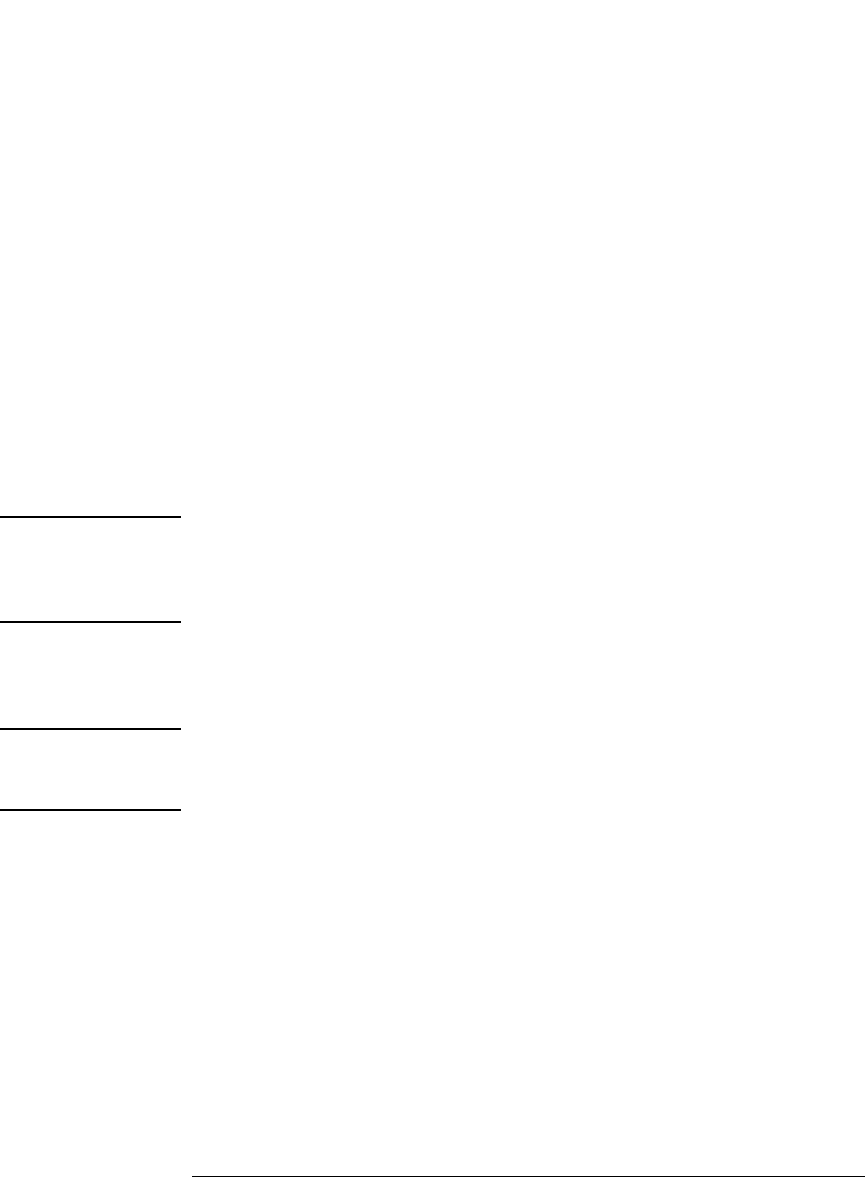User's Manual
Table Of Contents
- Agilent Technologies 16750A/B Logic Analyzer
- Agilent Technologies 16750A/B Logic Analyzer
- Contents
- Getting Started
- Step 1. Connect the logic analyzer to the device under test
- Step 2. Choose the sampling mode
- Step 3. Format labels for the probed signals
- Step 4. Define the trigger condition
- Step 5. Run the measurement
- Step 6. Display the captured data
- For More Information...
- Example: Timing measurement on counter board
- Example: State measurement on counter board
- Task Guide
- Probing the Device Under Test
- Choosing the Sampling Mode
- To select transitional timing or store qualified
- Formatting Labels for Logic Analyzer Probes
- Setting Up Triggers and Running Measurements
- Displaying Captured Data
- Using Symbols
- Printing/Exporting Captured Data
- Cross-Triggering
- Solving Logic Analysis Problems
- Saving and Loading Logic Analyzer Configurations
- Reference
- The Sampling Tab
- The Format Tab
- Importing Netlist and ASCII Files
- The Trigger Tab
- The Symbols Tab
- Error Messages
- Must assign Pod 1 on the master card to specify actions for flags
- Branch expression is too complex
- Cannot specify range on label with clock bits that span pod pairs
- Counter value checked as an event, but no increment action specified
- Goto action specifies an undefined level
- Maximum of 32 Channels Per Label
- Hardware Initialization Failed
- Must assign another pod pair to specify actions for flags
- No more Edge/Glitch resources available for this pod pair
- No more Pattern resources available for this pod pair
- No Trigger action found in the trace specification
- Slow or Missing Clock
- Timer value checked as an event, but no start action specified
- Trigger function initialization failure
- Trigger inhibited during timing prestore
- Trigger Specification is too complex
- Waiting for Trigger
- Analyzer armed from another module contains no "Arm in from IMB" event
- Specifications and Characteristics
- Concepts
- Understanding Logic Analyzer Triggering
- Understanding State Mode Sampling Positions
- Getting Started
- Glossary
- Index

82
Chapter 2: Task Guide
Setting Up Triggers and Running Measurements
Flags can also be used to drive the logic analysis system's Port Out
signal.
To insert a flag action
You can use the Set/clear/pulse flag trigger function to insert a flag
action. When editing advanced trigger functions, follow these steps to
insert a flag action:
1. In the Trigger tab's Trigger Sequence area, select one of the action buttons
(for example, Trigger or Goto), choose Insert ACTION, choose Flag, and
choose either Set, Clear, Pulse set, or Pulse clear.
Flags in Pulse mode sit in the opposite state when not being pulsed. If you
insert a Pulse set action for a flag in one analyzer, you cannot insert a
Pulse clear action for the same flag in a different analyzer.
NOTE: Within an analyzer, the same flag cannot be used in both Pulse and Level (Set/
Clear) modes. If a flag action is inserted or modified with a different mode
than other actions for the same flag, all actions for that flag will change to
match the new mode.
2. If you chose Pulse set or Pulse clear, enter the width of the pulse.
Pulse width is settable from 50 ns to 1.275 us in 5 ns steps.
NOTE: Within an analyzer, a flag's pulse width must be the same in every action for
that flag. Whenever the pulse width is changed in a flag action, it changes in all
other actions for that flag.
3. Select the flag number button and choose the number of the flag you want
the action to occur on.
To insert a flag event
Flag events are like other events in that they evaluate to either true or
false.
You can use the Wait for flag trigger function to insert a flag event.
When editing advanced trigger functions, follow these steps to insert a
flag event:
1. In the Trigger tab's Trigger Sequence area, select one of the existing event
buttons (for example, a label name, Anything, Timer, Counter, or Flag) and










